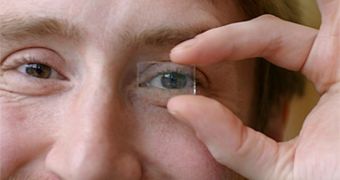A study currently conducted at the Massachusetts Institute of Technology (MIT) could finally allow for the construction of windows that have solar cells embedded in them. Researchers in Cambridge are now developing transparent cells that can use light while at the same time allowing it to pass through.
There are some pretty significant implications to this. One day, experts believe, the entire surface of buildings could be one giant solar panel, that will contribute to produce electricity for that particular structure all day long.
At the same time, even conventional windows – of the type used in the average home – could be made of solar panels as well. This would contribute to clearing some of the pressure that is currently being placed on national power grids around the world.
The potential this new technology has to save billions of dollars in energy costs cannot be ignored, say MIT scientists. This is one of those transformative innovations that can really change things.
One of the things that allowed physicists to build the new transparent solar cells was the development of a method of allowing visible light to pass through a material that is capable of harvesting photons in the infrared portion of the electromagnetic spectrum.
This is precisely what the research team led by Vladimir Bulović and Richard Lunt did. The experts say that their innovation could also help reduce solar cell costs by eliminating the price of installation.
Bulović, one of the two leaders of the work, holds an appointment as a professor of electrical engineering in the MIT Department of Electrical Engineering and Computer Science. His colleague, Lunt, is a postdoctoral researcher in the Research Laboratory of Electronics.
Details of the team's innovation were published in the latest issue of the esteemed scientific journal Applied Physics Letters. The work will also appear in an upcoming print issue of the journal.
“This work demonstrates a useful effect, and is based on very sound science and engineering. [However,] it is but one of the many other methods by which a similar functionality could be achieved,” says Max Shtein.
“The lifetime of organic PV cells is a bit of an unknown at this point, though there is some hope,” the expert adds, speaking of the main challenges the new system is faced with. “The potential of this technology is good if projected far into the future,” he addes.
Shtein holds an appointment as an associate professor of materials science and engineering at the University of Michigan, but was not a part of the new study.

 14 DAY TRIAL //
14 DAY TRIAL //